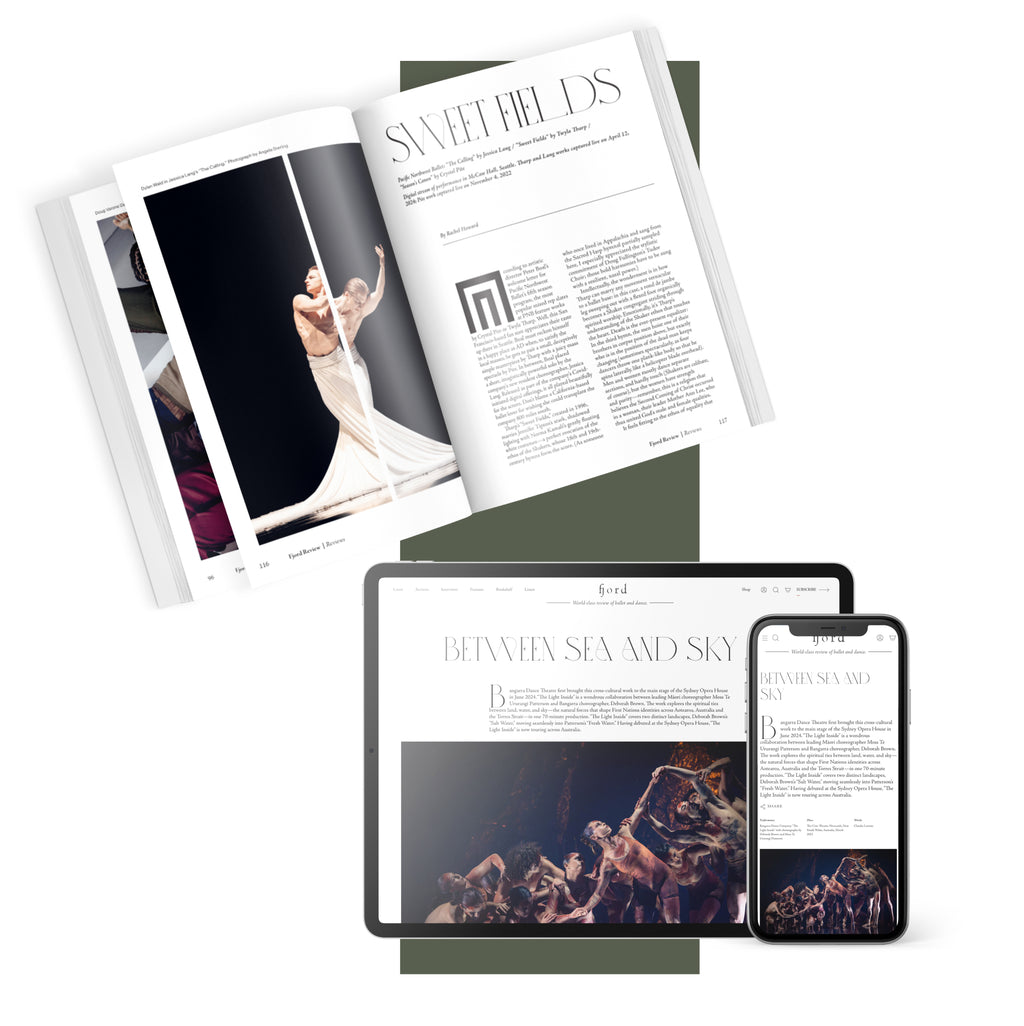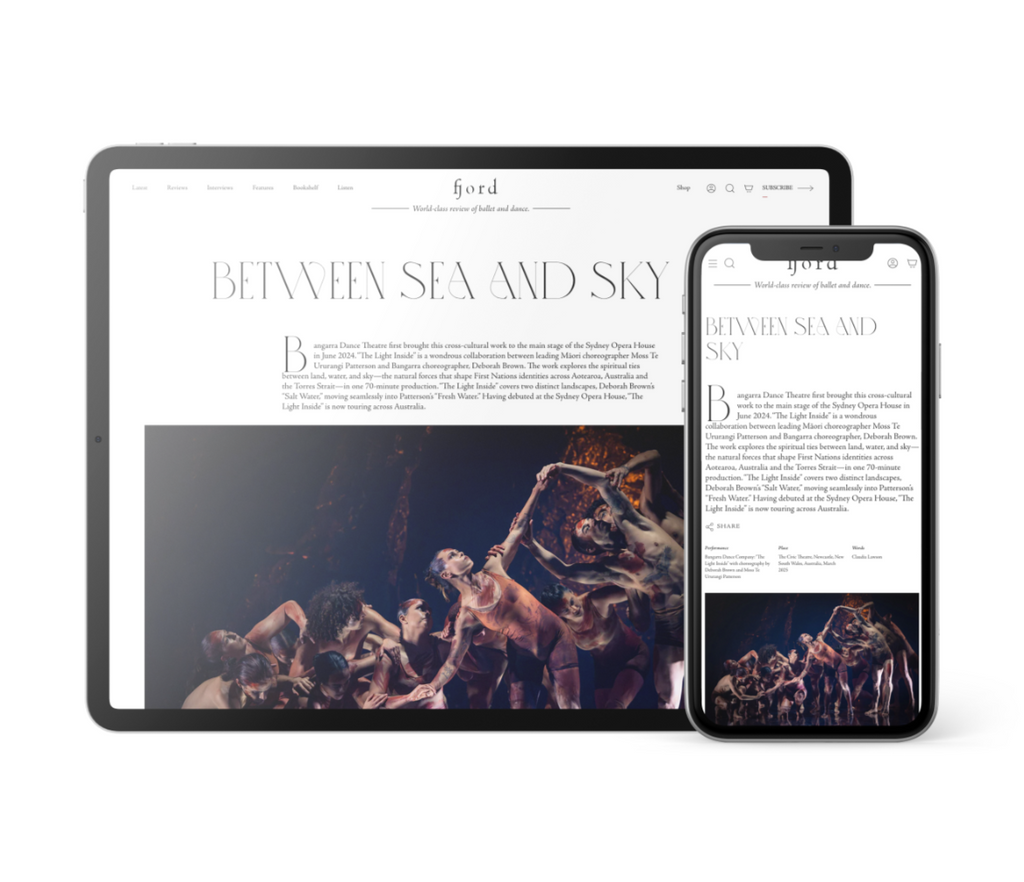How did you start working with City Ballet?
I called up the ballet company and said I’d like to photograph them. They replied, “Well, we have Martha Swope, she’s our photographer.” So, I called Martha and said I’d like to work with her because I’d like to photograph the New York City Ballet. To make a long story short, she ended up hiring me. I worked with her for a year. At the end of that time, the company had seen some of my work and they asked me to photograph them.
As fate would have it, it was the summer of 1977, here at SPAC. I like to think that the “Photography Angel” was at my side, as some of my best images ever were done that very first season. As I said, I felt like I was born to photograph dance. The whole sensibility—the metaphysical and physical timing of the “moment” was just right for what matters to me. Also I think the difference is I try to make what I call “illuminated documents.” I'm trying to make images that mean something, that are illuminating what it is. So that's got to deal more with my sensibility. And I never confuse the difference between a ballet and a photograph. They're two very distinct things.
People must often point out to you that you are photographing an art that moves and a photograph is static, still.
When people say that, I immediately say, “No, it’s not. You know, it’s never still. It happens once, shall we say, but it’s alive and how you view it is alive.” I recently did a Guggenheim “Works & Process” on my work at the New York Public Library with Wendy Whelan. I loved that because it was across the [Lincoln Center] Plaza, where so many of these images were made. I had a picture of Wendy as Terpsichore in “Apollo.” I was going to explain about photographs not being static, but as I presented the image on the screen, Wendy immediately said, “I always love this picture because of the movement in the skirt.” She’s just standing on pointe, but she’d done a twist which caused her skirt to have movement. That was one of those perfect moments of stillness yet movement.
When you see a ballet, everything goes by so quickly. It is that ephemeral nature that is astounding and what we love. But a photograph allows another thing to happen. You can look at that photograph for five seconds, which is an eternity next to the fact that the taking of the image goes by in 1/500th of a second. Or, you can spend an hour and invest who you are with the image, and yet, it will still be different every time you look at it. Part of what I love about photographing dance is reflected perfectly in the quote by the poet, William Blake, when he says, “Eternity is in love with the productions of time.”
When people ask me, “Don’t you get bored photographing the same ballet over and over,” it always startles me. I reply, “It’s not the same, it's never the same. Everything shifts. Where I sit, who's dancing, the tempo of the music, the sensibility of the dancers, the this, the that. It’s never-ending, so I’m never bored because it’s always different. To paraphrase the Greek philosopher Heraclitus, ‘you can’t step in the same river twice.’ And, so it is with dance. You never actually see the same ballet twice.”
What has changed for you in almost 50 years of photographing? Do you take more photos, or less, now that it’s digital rather than film?
Basically, I shoot. I don't use a motor drive [for continuous shooting] even though many photographers do and hope for the best. In fact, there’s a term we use called, “spray and pray.” Fortunately for me, I started when it was film. So I shot with Leicas, which were quiet, though not completely silent and, only one image at a time. It is about choice and choosing, choosing the moment in the flash of a moment. It’s not about anticipation, but about being one with the dancer and the ballet in that precise moment.
The newest cameras are totally silent and have incredibly high resolution. Finally, cameras exist that work wonderfully for my purposes, the sharpness and the quietness. I used to have to put my camera in a large metal camera blimp which I then wrapped in a coat and then, another coat! I also used a wrap that was made out of a large piece of black velvet, liturgical vestment material. It was given to me by Father Adrian, Mr. Balanchine’s priest, and a good friend of mine. Holly Hines, the director of the costume shop at NYCB, sewed it together so it would be a double layer of quiet. This was over 35 years ago and I literally wrapped my camera up in a “bulky mountain of quiet.”
And now that cameras are silent?
Now, the cameras are silent, I can shoot freely. Before, I had to make a split-second judgment about whether to take the photo or not. Aside from wanting to catch a split-second movement that will never come again, I also had to weigh the balance between the image in my lens and the noise. We’re talking split-second judgment—a process that is triggered in the brain and coordinates the lightning speed of the eye-finger connection. This is not like the typical firing of the neurons of a human being. Sometimes, I’d purposely photograph with the opposite eye and say to myself, “This must be how a typical person sees things.” I would always be late if I photographed with that “wiring.”
If you ask me how many pictures I take, I would say it’s irrelevant because it’s just the one moment that makes the image. At the end of the evening, I look at what I have and I decide what I will give to NYCB for their selections.
Back when it was film, we produced proof sheets. So, that would be 36 images on a proof sheet. NYCB would look at the proof sheets and they would choose what they wanted. If it was a “rush,” I would choose what they needed because it had to be done overnight for the newspapers the next day. My normal work week was anywhere from 60 to 100 hours. After performances, my assistant would come to the theater to pick up the 10-12 rolls of film and take them to the studio to develop. One time I had a late dinner with Peter [Martins] and Darci [Kistler] at their apartment. I was there from let’s say, 10:30 pm to midnight or so. Then I said, “I better go, I have to get back to the studio,” and Peter asked incredulously, “You have to go work again?!” and I replied, “Yes, how do you think the pictures get to the press office at 9 am!”











How did I not know you were also a painter, Paul?! Great interview!
Terrific interview of someone who has been an integral part of NYCB for decades.